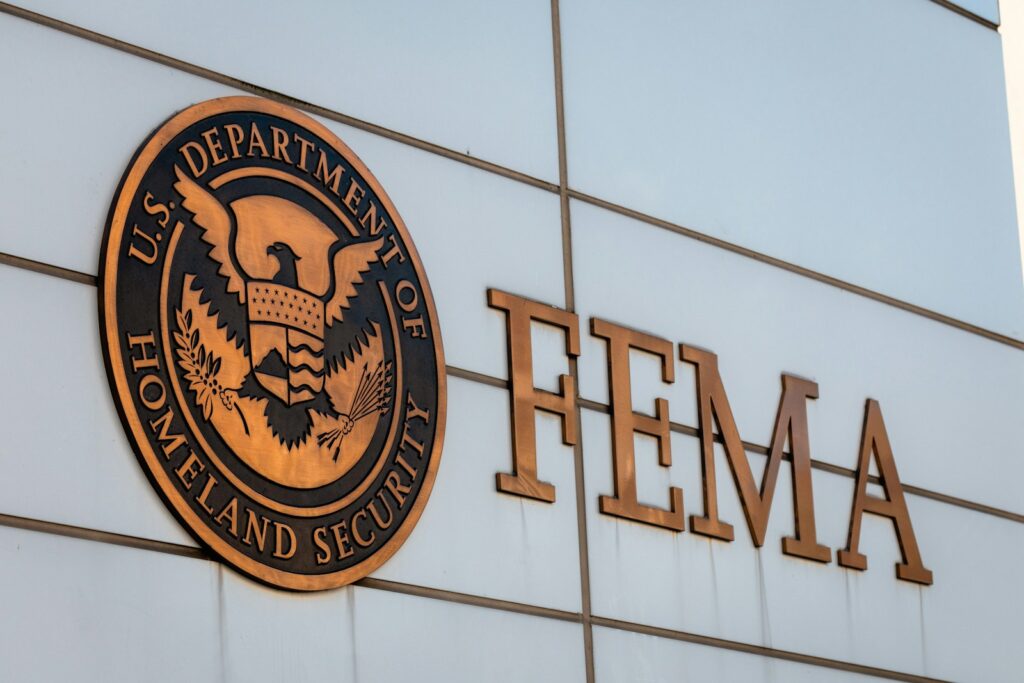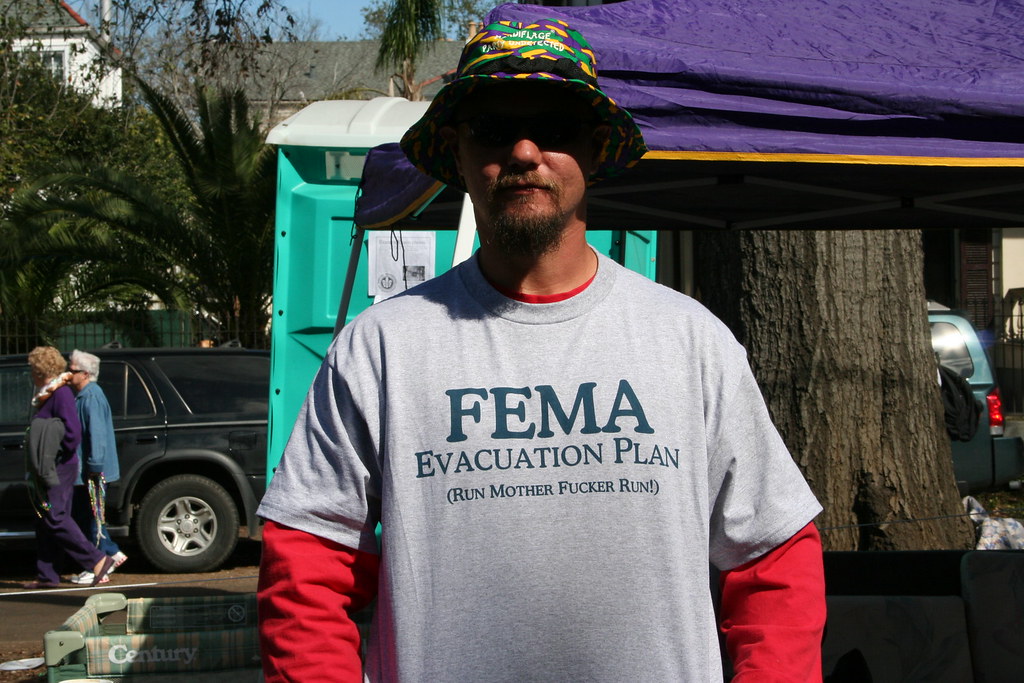When disaster strikes, teams from the Federal Emergency Management Agency (FEMA) are among the first on the scene. These dedicated FEMA workers and emergency managers coordinate recovery, deliver critical aid, and help communities rebuild after hurricanes, floods, and other major disasters.
As a family-owned transport company that often supports federal emergency management efforts, we understand the importance of logistics, readiness, and reliable partnerships. Supporting these front-line professionals is a responsibility we all share.
What is FEMA & How it Supports Emergency Response Under the Department of Homeland Security
The Federal Emergency Management Agency (FEMA) is a key part of the federal government, operating under the Department of Homeland Security as an independent agency responsible for leading the nation’s emergency response and disaster recovery efforts. Established in 1979, FEMA’s core mission is to help people before, during, and after disasters by coordinating public assistance, individual assistance, and emergency funding for affected communities.
Over the decades, FEMA officials and agency or field leadership have guided the country through major disasters, from Hurricane Katrina to Hurricane Milton, and countless severe storms in between. The former FEMA administrator and former FEMA chief helped set the tone for decisive, nationwide coordination across multiple administrations, including the Trump administration and President Trump’s oversight of federal disaster relief. Through executive orders, congressional oversight by the infrastructure committee and house transportation committee, and reviews by the inspector general, FEMA continues to refine its operations to ensure accountability and transparency.
FEMA’s work often involves balancing complex challenges, including reports that FEMA employees systematically refused assignments in difficult regions, or that internal textbook political discrimination created a systemic problem that required a special counsel investigation. In Washington, leadership has emphasized professional responsibility, reaffirming FEMA’s commitment to respond effectively and remain confident in its ability to serve the American people.
Throughout each fiscal year, the agency issues press releases detailing its response to disasters, noting few instances where miscommunication or logistical issues have occurred. Even in politically charged climates where campaign signs, displayed signs, or statements from Secretary Kristi Noem spark debate, FEMA’s purpose remains clear: to protect and assist tens of thousands of disaster survivors with integrity and decisive action.
From its early days to its modern efforts coordinating recovery from two hurricanes at once, FEMA’s response reflects the enduring strength of the Homeland Security network. Using government devices, satellite mapping like a world globe, and cross-agency data, FEMA continues to mobilize rapidly and respond appropriately to the nation’s most pressing emergencies. Its tireless work represents a cornerstone of public trust, a reminder that even amid scrutiny or calls to eliminate FEMA, the agency remains an essential part of America’s ability to recover, rebuild, and prepare for whatever comes next.
Why Supporting FEMA Staff When Disaster Strikes Matters
Behind every coordinated disaster response are the people making it happen — the FEMA workers, emergency managers, and first responders who dedicate themselves to restoring stability when chaos hits. Their work goes far beyond logistics and planning; it’s about compassion, endurance, and the will to help others when conditions are at their worst.
FEMA staff deploy at a moment’s notice, often leaving their own homes and families to assist communities across the country. Whether managing large-scale evacuations, coordinating public assistance programs, or providing on-site individual assistance, these professionals form the backbone of the nation’s disaster recovery system.
Supporting them doesn’t always mean working on the front lines. Simple acts — from helping your local community prepare to advocating for better emergency infrastructure — can strengthen the entire response network. By backing the people who protect us, we help ensure faster recoveries, stronger communities, and a more resilient country.
Here are ten meaningful ways you can support FEMA workers before, during, and after disaster strikes.
1. Recognize the Work of FEMA Workers, Emergency Managers, and First Responders
The role of FEMA workers and first responders is incredibly demanding. During a disaster response, they work long hours in challenging conditions, often far from their own families. Their duties range from coordinating search and rescue missions to setting up temporary housing and distributing essential supplies. This work carries significant emotional and physical weight.
Businesses and private citizens can show appreciation in simple ways. A public thank you on social media, a banner in your community, or simply expressing gratitude to a FEMA staff member can make a difference. Recognizing their sacrifice helps boost morale and acknowledges the vital public service they provide.
2. Understand the Federal Emergency Management Agency’s Mission
FEMA operates under the Department of Homeland Security to help people before, during, and after disasters. Its mission is to build a more resilient nation by working with federal, state, and local agencies. When a major disaster is declared, FEMA coordinates the federal response efforts, ensuring resources are deployed where they are needed most.
During a busy hurricane season, for example, the agency’s operations are massive. They manage everything from emergency communications to the logistics of moving supplies across the country. Understanding the scale of this emergency management work gives us a better appreciation for the complexities that FEMA employees navigate.
3. Donate to Verified Disaster Relief Funds
While FEMA provides federal aid, the needs of disaster survivors often exceed what government assistance can cover. Donating to verified disaster relief organizations is one of the most effective ways to help. These groups complement FEMA’s recovery efforts by providing food, shelter, and financial assistance directly to those affected.
It is crucial to verify the legitimacy of any fund before donating to prevent fraud. Look for established, reputable charities. Your financial contributions empower organizations to act quickly and fill gaps, contributing to more effective disaster aid and a smoother disaster recovery process for everyone involved.
4. Support Infrastructure and Climate Resilience Projects
One of the best ways to support FEMA staff is to reduce the severity of disasters before they happen. Proactive infrastructure improvements and climate resilience projects strengthen communities against severe storms and natural disasters. Better roads, stronger grids, and well-planned floodplains can lessen the impact when disaster strikes, easing the burden on emergency response teams.
Logistics partners play a key role in this preparedness. For instance, at Interstate Haulers, we help move materials and equipment for infrastructure projects, contributing to emergency transport readiness. When communities invest in preparedness, they create a safer environment and allow federal support to be focused on the most critical needs.
5. Respect the Chain of Command and Communication
Effective disaster response depends on seamless coordination. FEMA administrators, field leadership, and local agencies must work together in a structured chain of command. When citizens and organizations understand and respect this structure, it allows for a more organized emergency response.
Spreading misinformation or acting outside official channels can create confusion and slow down the delivery of aid. During a crisis, rely on official sources for information and follow the guidance of emergency managers. Public cooperation is a key component of professional responsibility and helps FEMA staff do their jobs effectively.
6. Encourage Mental Health Resources for FEMA Employees
The high-stress environment of disaster response takes a toll. Emergency managers and FEMA canvassers often face burnout, anxiety, and emotional exhaustion from witnessing widespread devastation. Supporting their mental health is essential for their well-being and long-term effectiveness.
Advocating for accessible counseling, peer support programs, and decompression time can make a significant impact. FEMA’s own education division offers resources, but community and organizational support reinforces the message that mental health is a priority. A healthy and supported workforce is better equipped to handle the immense pressures of recovery.
7. Advocate for Fair Treatment of Federal Employees
In recent years, there have been discussions and investigations regarding political bias and its potential impact on federal agencies. Regardless of politics, disaster response must remain nonpartisan. The mission to save lives and rebuild communities transcends political beliefs.
Advocating for fair treatment and professional protections for every federal employee helps ensure that disaster aid is distributed based on need, not politics. When FEMA staff are allowed to perform their duties with professional responsibility and without undue influence, everyone benefits.
8. Partner with FEMA Through Logistics and Specialized Transport
The Department of Homeland Security relies on private-sector partners to support its mission. Companies can assist FEMA by providing specialized services, particularly in logistics. Transporting essential equipment like mobile command centers, restroom trailers, or temporary housing units is a critical part of the federal role in any emergency response.
Interstate Haulers has extensive experience moving industrial trailers and other assets for FEMA-related projects. Dependable transport ensures that resources arrive safely and on time, which is fundamental to successful federal emergency management agency operations.
9. Prepare Locally—Because Every Citizen Plays a Role
Emergency management begins at home. When individuals and families are prepared, it reduces the immediate strain on FEMA workers and local first responders. This “whole community” approach to disaster resilience is vital.
Create an emergency plan, assemble a disaster kit with food and water, and know your local evacuation routes. These simple acts of preparedness can keep your family safe and allow emergency personnel to focus on those in most critical need.
10. Continue Supporting Long After the News Cycle Ends
A disaster doesn’t end when the news cameras leave. For disaster survivors, the road to recovery is long, and FEMA’s work continues for months or even years. Ongoing needs include debris removal, long-term housing solutions, and infrastructure rebuilding.
Continued partnerships between citizens, government agencies, and companies are essential for lasting disaster recovery. By staying engaged and offering support long after the initial incident, we help communities fully restore their strength and resilience. The FEMA administrator and their teams remain committed for the long haul, and so should we.

Photo by Andy Feliciotti on Unsplash
United in Readiness and Resilience
FEMA workers and first responders embody courage and compassion during our nation’s most difficult moments. By supporting their mission, staying prepared, and building strong logistics networks, we can all help the Federal Emergency Management Agency protect and restore communities more effectively.
If your organization needs reliable, nationwide transport for FEMA projects, emergency trailers, or disaster recovery equipment, Interstate Haulers is ready to help. We deliver safely, efficiently, and with the care that comes from nearly 30 years of trusted service.




